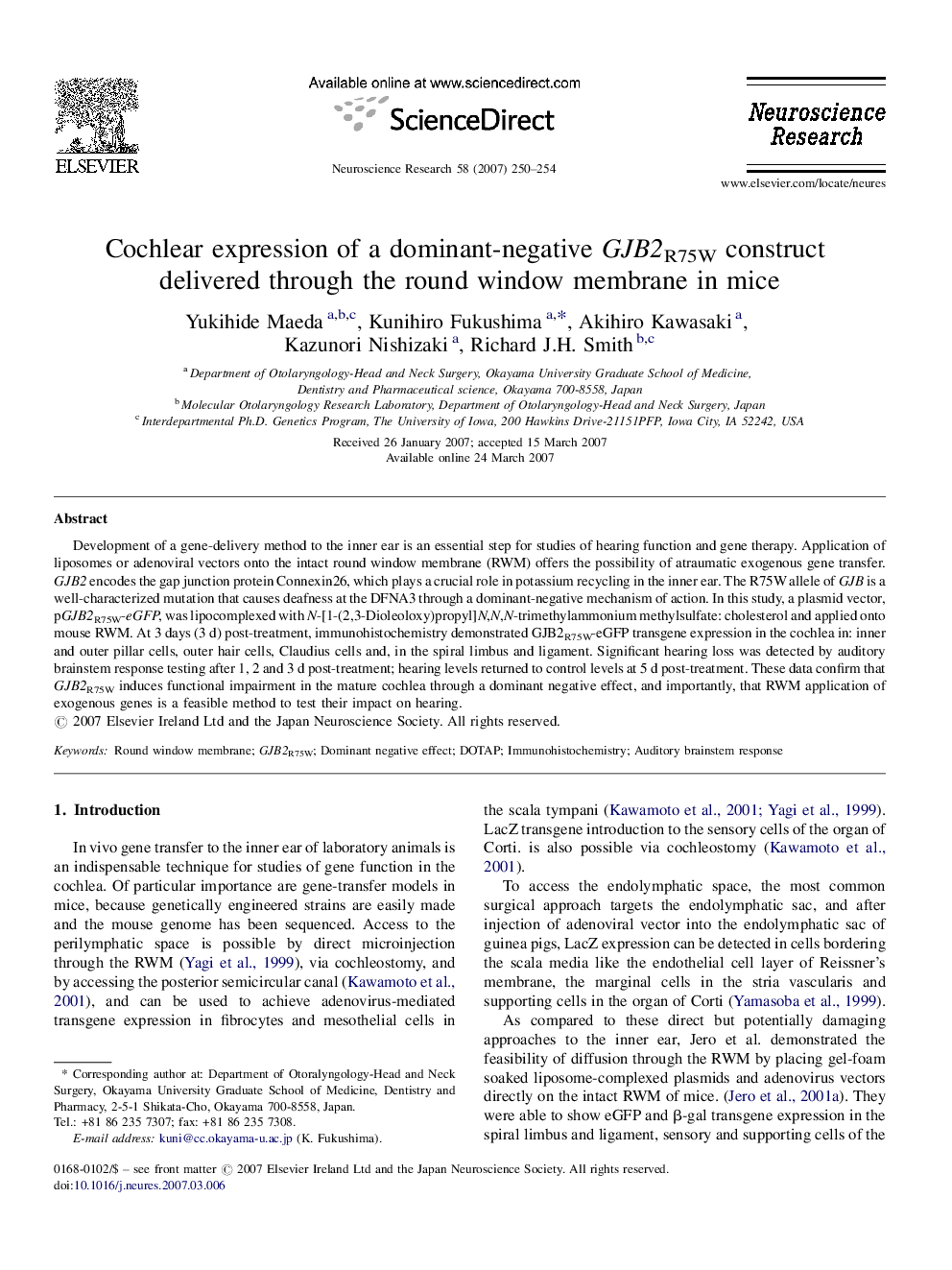| Article ID | Journal | Published Year | Pages | File Type |
|---|---|---|---|---|
| 4352147 | Neuroscience Research | 2007 | 5 Pages |
Abstract
Development of a gene-delivery method to the inner ear is an essential step for studies of hearing function and gene therapy. Application of liposomes or adenoviral vectors onto the intact round window membrane (RWM) offers the possibility of atraumatic exogenous gene transfer. GJB2 encodes the gap junction protein Connexin26, which plays a crucial role in potassium recycling in the inner ear. The R75W allele of GJB is a well-characterized mutation that causes deafness at the DFNA3 through a dominant-negative mechanism of action. In this study, a plasmid vector, pGJB2R75W-eGFP, was lipocomplexed with N-[1-(2,3-Dioleoloxy)propyl]N,N,N-trimethylammonium methylsulfate: cholesterol and applied onto mouse RWM. At 3 days (3Â d) post-treatment, immunohistochemistry demonstrated GJB2R75W-eGFP transgene expression in the cochlea in: inner and outer pillar cells, outer hair cells, Claudius cells and, in the spiral limbus and ligament. Significant hearing loss was detected by auditory brainstem response testing after 1, 2 and 3Â d post-treatment; hearing levels returned to control levels at 5Â d post-treatment. These data confirm that GJB2R75W induces functional impairment in the mature cochlea through a dominant negative effect, and importantly, that RWM application of exogenous genes is a feasible method to test their impact on hearing.
Keywords
Related Topics
Life Sciences
Neuroscience
Neuroscience (General)
Authors
Yukihide Maeda, Kunihiro Fukushima, Akihiro Kawasaki, Kazunori Nishizaki, Richard J.H. Smith,
